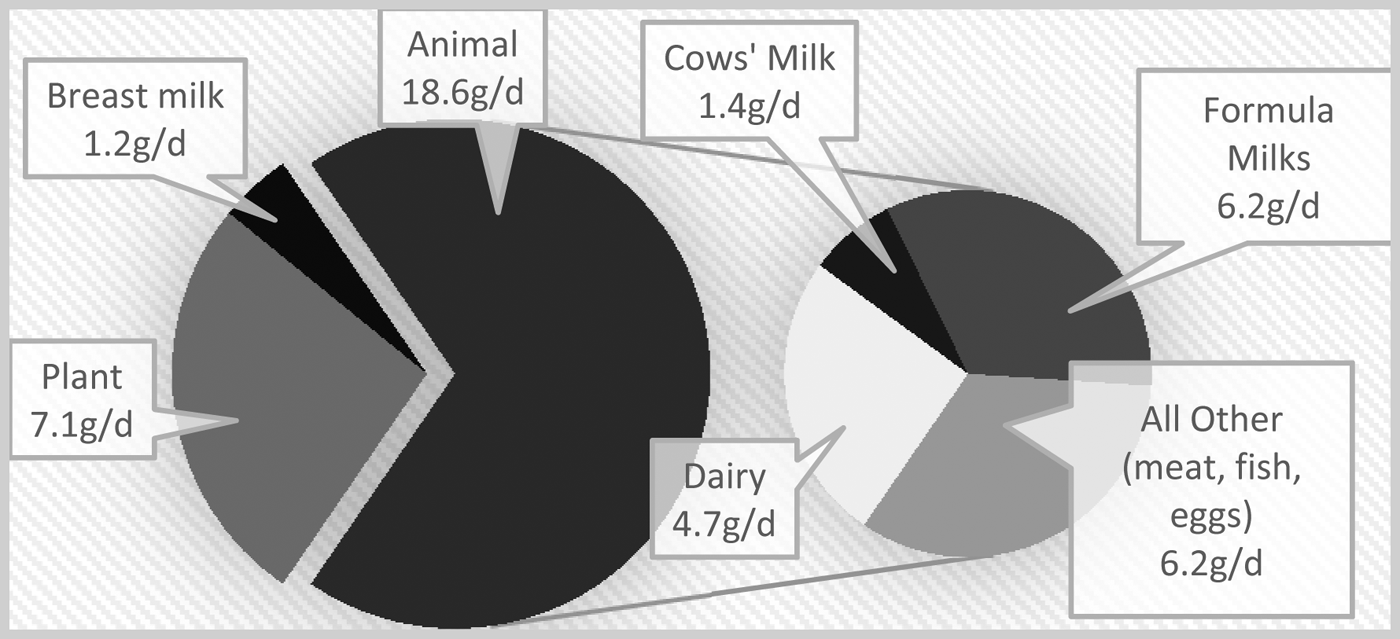Childhood obesity is of concern, with over a fifth of children in the UK starting school either overweight or obese( 1 ). The early protein hypothesis suggests that excess protein intake in infancy is a risk factor for overweight and obesity in later childhood( Reference Gunther, Remer and Kroke 2 ). During the complementary feeding period there is a rapid increase in protein intake( Reference Gunther, Remer and Kroke 2 ). High animal protein intake at 12 months, in particular from dairy sources, has been associated with an unfavourable body composition at 7 years of age( Reference Gunther, Remer and Kroke 2 ). It has been suggested that protein as a percentage of energy intake should not exceed 15 % in infants 12 months old, as higher than this may be associated with a higher risk of obesity in later life( Reference Pimpin, Jebb and Johnson 3 ). Using the Diet and Nutrition Survey of Infants and Young Children( Reference Lennox, Sommerville and Ong 4 ) this descriptive analysis reports protein intake and sources in 6 to 18 month olds in the UK, and compares intakes to the RNI( 5 ).

Fig. 1. Mean protein intake from different sources among infants 6 to <12 months

Fig. 2. Mean protein intake from different sources among infants 12 to 18 months

At 6 to <12 months, mean energy intake was 801 kcal/day, mean protein intake 25·5 g/day (13 % of energy), while at 12 to 18 months mean energy intake was 967 kcal/day, and protein 38 g/day (16 % energy). Mean protein intakes were 70 % and 150 % higher than the RNI at 6 to <12 months, and 12 to 18 months respectively. Major sources of protein were formula milks, cows' milk and other dairy products. Protein contribution from cows' milk rose from 6 % at 6 to <12 months to 25 % at 12–18 months. Cows' milk contributes valuable nutrients to the diet, but the possible implications of this large increase in animal protein intake should be considered. Future research is needed to understand the implication of reducing protein intakes in early life on long-term health.




